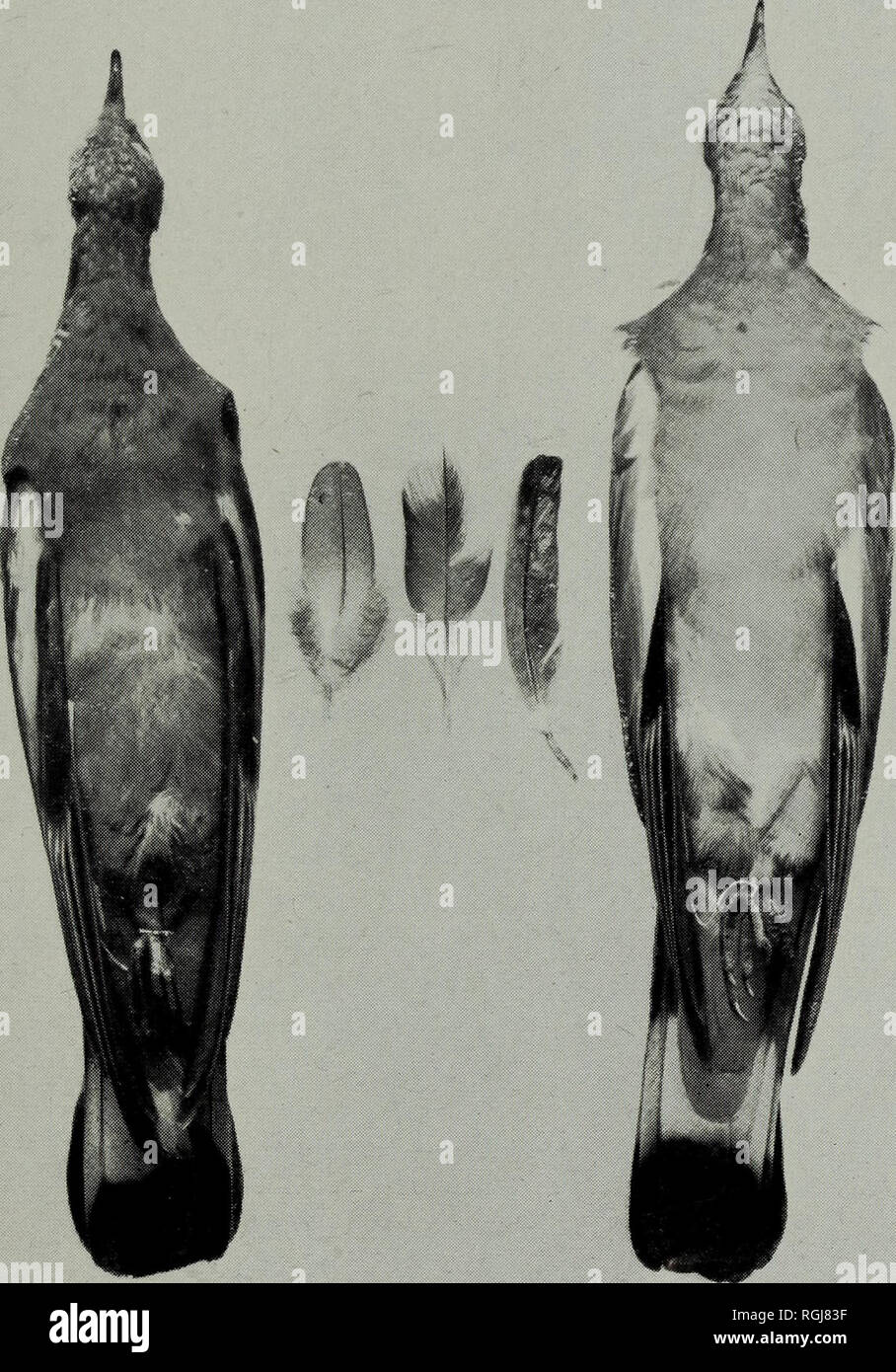. Bulletin of the British Ornithologists' Club. 1956 77 Vol. 76 the course of the disease. These, as can be seen from the plates, show abnormal feather structure, the barbs lacking the barbules and interlocking hooklets. They often show atrophic growth lines and the shafts are seen to share in the excessive melanin deposition. The rachis is sometimes transversely ridged, while the proximal feathering is almost devoid of the downy filoplumes so characteristic of normal feathers. In the wings, the exposed tips of the primaries show a greater degree of wear than that portion of the feather which

Image details
Contributor:
Book Worm / Alamy Stock PhotoImage ID:
RGJ83FFile size:
7.1 MB (595.9 KB Compressed download)Releases:
Model - no | Property - noDo I need a release?Dimensions:
1321 x 1891 px | 22.4 x 32 cm | 8.8 x 12.6 inches | 150dpiMore information:
This image is a public domain image, which means either that copyright has expired in the image or the copyright holder has waived their copyright. Alamy charges you a fee for access to the high resolution copy of the image.
This image could have imperfections as it’s either historical or reportage.
. Bulletin of the British Ornithologists' Club. 1956 77 Vol. 76 the course of the disease. These, as can be seen from the plates, show abnormal feather structure, the barbs lacking the barbules and interlocking hooklets. They often show atrophic growth lines and the shafts are seen to share in the excessive melanin deposition. The rachis is sometimes transversely ridged, while the proximal feathering is almost devoid of the downy filoplumes so characteristic of normal feathers. In the wings, the exposed tips of the primaries show a greater degree of wear than that portion of the feather which is protected by being covered by the next in series. This phenomenon is of course observable in normal birds, but only when the plumage is abraided, preceding or during the moult. In the cases now under consideration, this is not so and the new genera- tion of feathers are seen to be structurally imperfect, showing defective barb and barbule formation.. Wood Pigeon: Left a tubercular and right a normal bird. Feathers: Upper tail coverts from left a normal, and centre, a tubercular Wood Pigeon. Right, a secondary from a tubercular bird. Both diseased feathers show structural defects.. Please note that these images are extracted from scanned page images that may have been digitally enhanced for readability - coloration and appearance of these illustrations may not perfectly resemble the original work.. Taylor, Nancy M. Oxford : Clarendon Press